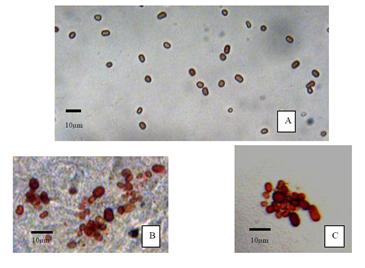The Extraordinary Tale of Red Rain, Comets and Extraterrestrials
Source: technologyreview.com
For years, claims have circulated that red rain which fell in India in 2001, contained cells unlike any found on Earth. Now new evidence that these cells can reproduce is about to set the debate alive. Panspermia is the idea that life exists throughout the universe in comets, asteroids and interstellar dust clouds and that life of Earth was seeded from one or more of these sources. Panspermia holds that we are all extraterrestrials.
Panspermia is the idea that life exists throughout the universe in comets, asteroids and interstellar dust clouds and that life of Earth was seeded from one or more of these sources. Panspermia holds that we are all extraterrestrials.While this is certainly not a mainstream idea in science, a growing body of evidence suggests that it should be carefully studied rather than casually disregarded.
For example, various bugs have been shown to survive for months or even years in the harsh conditions of space. And one of the more interesting but lesser known facts about the Mars meteorite that some scientists believe holds evidence of life on Mars, is that its interior never rose above 50 degrees centigrade, despite being blasted from the Martian surface by an meteor impact and surviving a fiery a descent through Earth’s thick atmosphere.
If there is life up there, this evidence suggests that it could survive the trip to Earth.
All that seems well established. Now for the really controversial stuff.
In 2001, numerous people observed red rain falling over Kerala in the southern tip of India during a two month period. One of them was Godfrey Louis, a physicist at nearby Cochin University of Science and Technology. Intrigued by this phenomena, Louis collected numerous samples of red rain, determined to find out what was causing the contamination, perhaps sand or dust from some distant desert.
Under a microscope, however, he found no evidence of sand or dust. Instead, the rain water was filled with red cells that look remarkably like conventional bugs on Earth. What was strange was that Louis found no evidence of DNA in these cells which would rule out most kinds of known biological cells (red blood cells are one possibility but ought to be destroyed quickly by rain water).
Louis published his results in the peer-reviewed journal Astrophysics and Space in 2006, along with the tentative suggestion that the cells could be extraterrestrial, perhaps from a comet that had disintegrated in the upper atmosphere and then seeded clouds as the cells floated down to Earth. In fact, Louis says there were reports in the region of a sonic boom-type noise at the time, which could have been caused by the disintegration of an object in the upper atmosphere.
Since then, Louis has continued to study the cells with an international team including Chandra Wickramasinghe from the University of Cardiff in the UK and one of the leading proponents of the panspermia theory, which he developed in the latter half of the 20th century with the remarkable physicist Fred Hoyle.
Today Louis, Wickramasinghe and others publish some extraordinary claims about these red cells. They say that the cells clearly reproduce at a temperature of 121 degrees C. "Under these conditions daughter cells appear within the original mother cells and the number of cells in the samples increases with length of exposure to 121 degrees C," they say. By contrast, the cells are inert at room temperature.
That makes them highly unusual, to say the least. The spores of some extremophiles can survive these kinds of temperatures and then reproduce at lower temperatures but nothing behaves like this at these temperatures, as far as we know.
This is an extraordinary claim that will need to be independently verified before it will be more broadly accepted.
And of course, this behaviour does not suggest an extraterrestrial origin for these cells, by any means.
However, Wickramasinghe and co can’t resist hinting at such an exotic explanation. They’ve examined the way these fluoresce when bombarded with light and say it is remarkably similar to various unexplained emission spectra seen in various parts of the galaxy. One such place is the Red Rectangle, a cloud of dust and gas around a young star in the Monocerous constellation.
It would be fair to say that more evidence will be required before Kerala’s red rain can be satisfactorily explained. In the meantime, it looks a fascinating mystery.
Article from: technologyreview.com
Horizon: We Are the Aliens
Video from: YouTube.com
Also tune into:
Michael Mautner - Panspermia, Seeding the Universe with Life






















